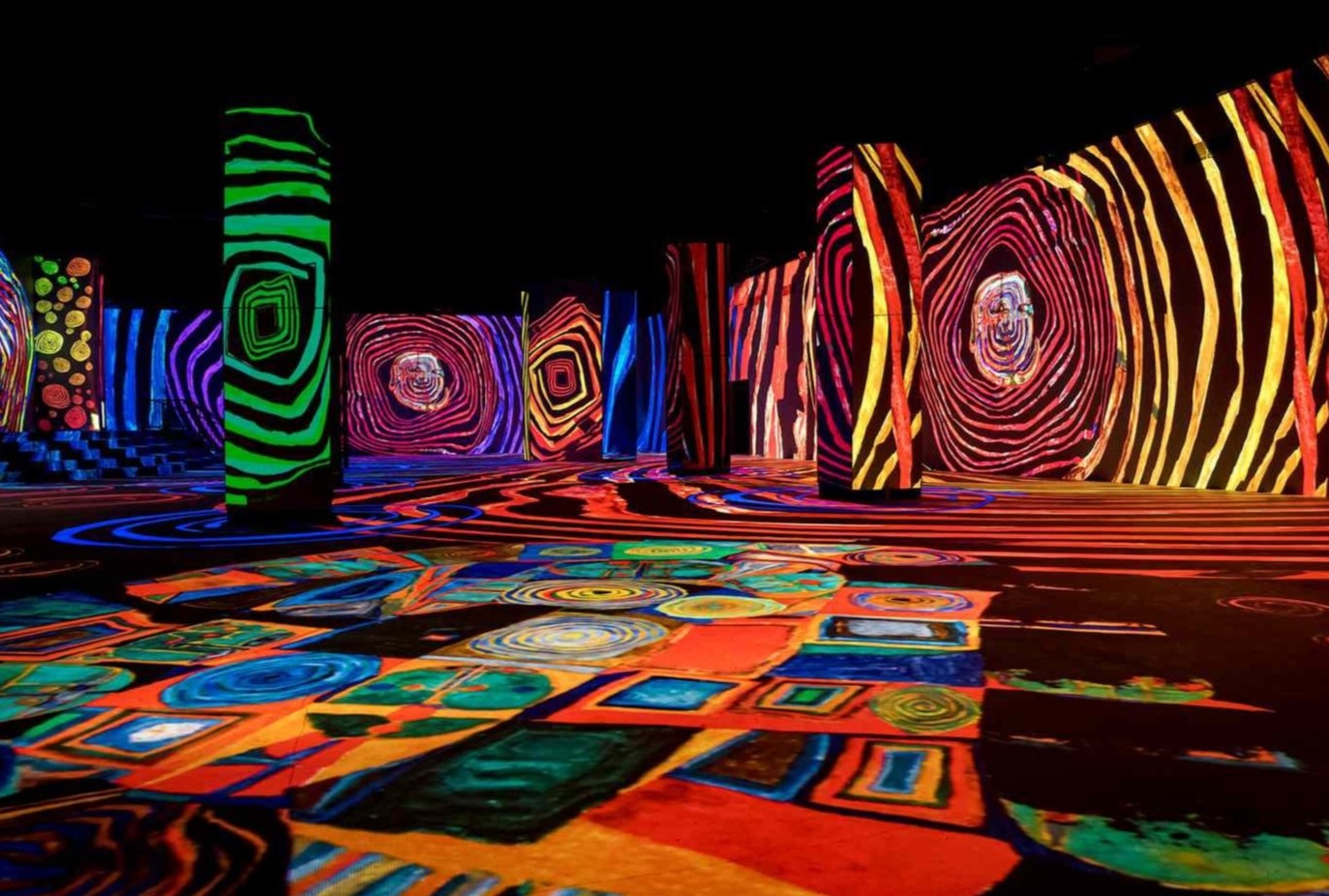
Immersive art transforms ordinary spaces into captivating realms, inviting viewers to step into a world where every corner and crevice pulses with creativity. This unique form of expression merges traditional art techniques with cutting-edge technology, creating environments that engage all senses. From luminous installations that transport you to another dimension to interactive exhibits that respond to your touch, immersive art is redefining the boundaries between the artist, the artwork, and the audience. Whether you're a seasoned art aficionado or a curious newcomer, these 20 facts about immersive art will open your eyes to the endless possibilities of this innovative art form. So, let's peel back the layers of this vibrant world, revealing the magic that lies within.
What is Immersive Art?
Immersive art transforms traditional viewing experiences, inviting participants into a multi-sensory environment. This genre of art doesn't just hang on a wall or sit on a pedestal. Instead, it surrounds you, creating a comprehensive experience that engages more than just the visual senses. It's about stepping into a piece of art and becoming part of its story, its emotions, and its space.
The Origins of Immersive Art
-
Immersive art isn't a new concept. Historical precedents set by panoramas in the 19th century served as early forms of immersive experiences. These large-scale paintings were designed to fill the viewer's peripheral vision, creating the illusion of being in the midst of the depicted scene.
-
The term "immersive art" might feel modern, but its roots can be traced back to the Baroque period. Churches and cathedrals used architecture, sculpture, and painting to create enveloping religious experiences that engaged believers in the sacred stories.
How Technology Elevates Immersive Art
-
Today, technology plays a crucial role in immersive art, with digital projections and virtual reality taking the experience to new heights. Artists use these tools to create environments that respond to and interact with the audience in real-time.
-
Soundscapes are another essential element, adding depth to the visual components. Through carefully curated sounds, creators can transport viewers to entirely different worlds, enhancing the immersive experience.
Immersive Art Around the World
-
Globally, immersive art exhibits have gained popularity, with installations popping up in cities from Paris to Tokyo. Each offers a unique experience, reflecting the cultural and artistic diversity of its location.
-
One notable example is the Atelier des Lumières in Paris, which uses 140 video projectors to bring paintings to life on the walls of a former foundry, allowing visitors to walk through and interact with animated versions of famous artworks.
The Impact of Immersive Art
-
Immersive art has the power to evoke strong emotional responses, creating a personal connection between the viewer and the piece. This connection is often more profound than that experienced with traditional art forms.
-
It also democratizes art, making it accessible to a broader audience. People who might not visit galleries or museums can engage with art in a more relaxed and interactive environment.
Future Trends in Immersive Art
-
The future of immersive art looks promising, with advances in technology opening up even more possibilities for creative expression. Augmented reality (AR) and mixed reality (MR) are set to play significant roles, blurring the lines between the physical and digital worlds even further.
-
As environmental concerns become more pressing, immersive art is also being used to raise awareness about ecological issues. Artists create experiences that highlight the beauty of the natural world and the importance of conservation, encouraging viewers to reflect on their impact on the planet.
Immersive Art and Education
-
Beyond entertainment, immersive art has educational potential. By creating immersive historical environments or scientific simulations, educators can offer students a more engaging and effective learning experience.
-
This approach has been particularly successful in museums, where immersive exhibits can bring history to life, making it more relatable and interesting for visitors of all ages.
The Role of the Audience in Immersive Art
-
In immersive art, the audience plays an active role. Their movements and interactions can change the course of the experience, making each visit unique.
-
This interactivity fosters a sense of ownership and participation that is rare in other art forms, where viewers are typically passive observers.
Immersive Art as a Tool for Social Commentary
-
Many immersive art installations serve as platforms for social commentary, addressing issues like inequality, political unrest, and cultural identity. Through engaging narratives and environments, artists can provoke thought and inspire action in ways that traditional media cannot.
-
This ability to connect on a visceral level makes immersive art an effective medium for sparking dialogue and fostering understanding among diverse audiences.
The Challenges of Creating Immersive Art
-
Despite its potential, immersive art faces challenges. High production costs and the need for specialized technology can be barriers for artists.
-
Additionally, the physical space required for large-scale installations limits where and how these works can be displayed, often necessitating significant logistical planning.
Why Immersive Art Matters
-
Immersive art matters because it pushes the boundaries of traditional art, inviting us to explore new perspectives and experience the world in novel ways. It's a testament to human creativity and the endless possibilities of artistic expression.
-
Moreover, it serves as a reminder that art is not just to be seen but to be lived. In our fast-paced, digitally-driven lives, immersive art offers a moment of connection, reflection, and wonder.
A Final Brushstroke on Immersive Art
Diving into immersive art is like stepping into another dimension, where boundaries between the viewer and artwork blur, creating a unique, unforgettable experience. This journey through 20 fascinating facts has hopefully sparked curiosity and offered a deeper appreciation for the innovative world of immersive art. From transforming spaces into vibrant, living canvases to engaging audiences in ways traditional art forms might not, immersive art stands out as a dynamic and evolving field. It's not just about observing; it's about becoming part of the art itself. Whether you're an art aficionado or someone just starting to explore this captivating world, there's always something new and exciting to discover. So, why not dive in? The world of immersive art awaits, ready to unfold its wonders one immersive experience at a time.
Was this page helpful?
Our commitment to delivering trustworthy and engaging content is at the heart of what we do. Each fact on our site is contributed by real users like you, bringing a wealth of diverse insights and information. To ensure the highest standards of accuracy and reliability, our dedicated editors meticulously review each submission. This process guarantees that the facts we share are not only fascinating but also credible. Trust in our commitment to quality and authenticity as you explore and learn with us.


